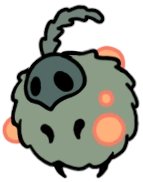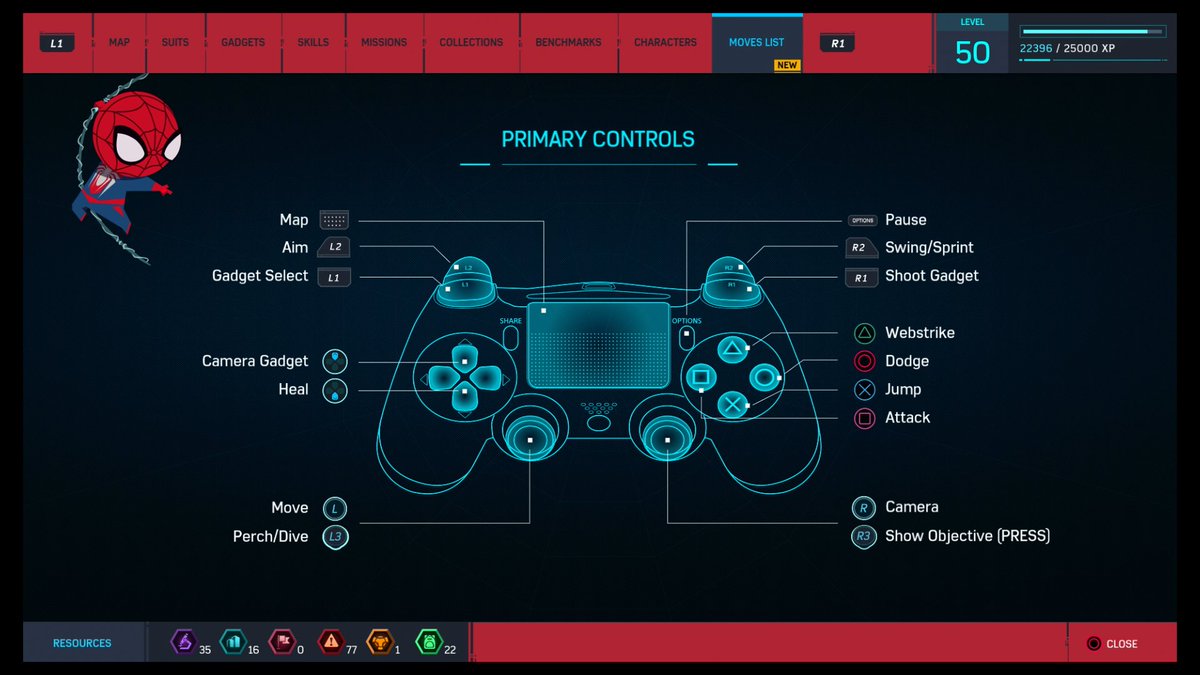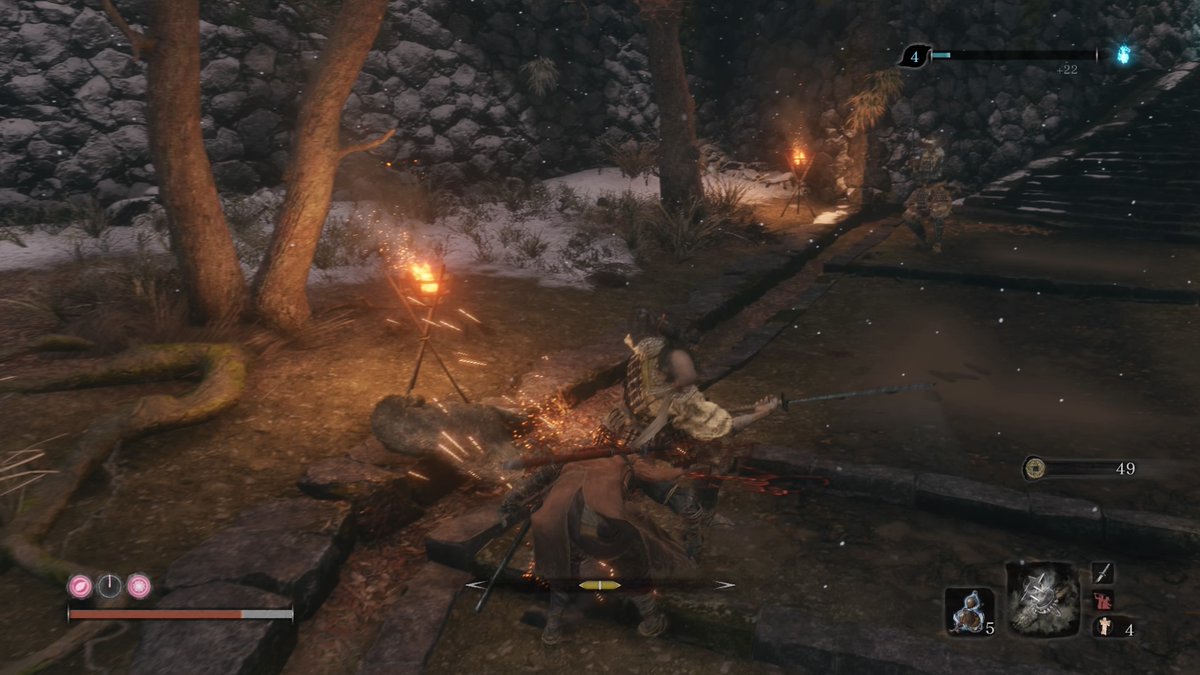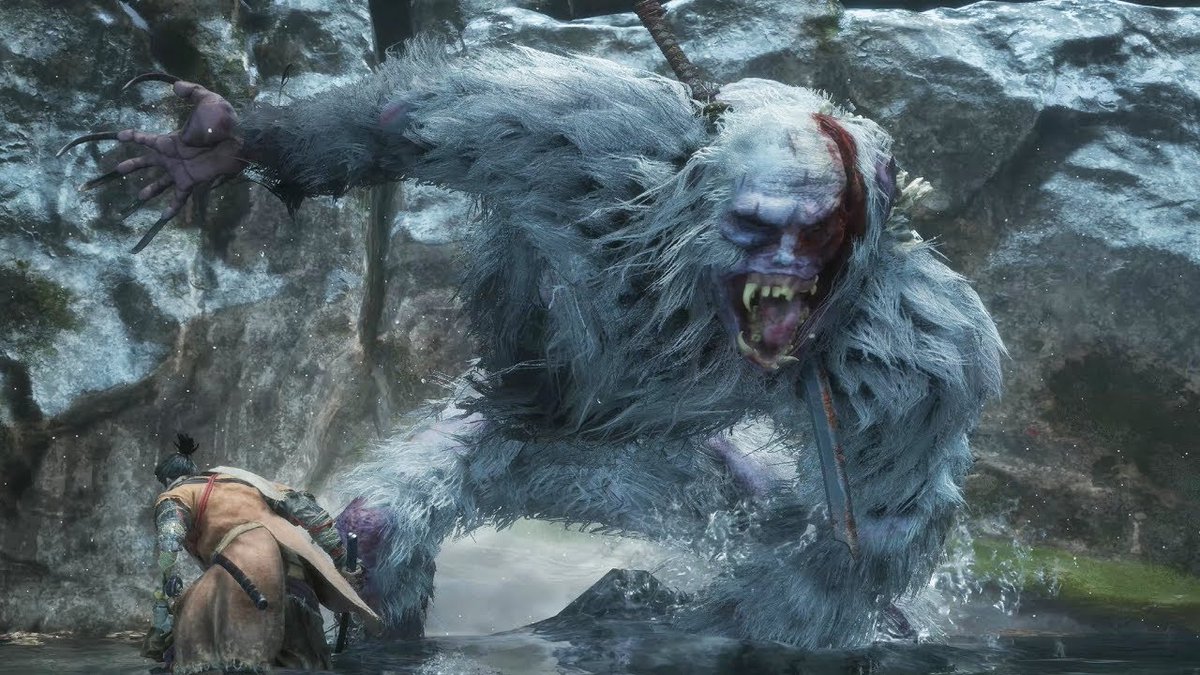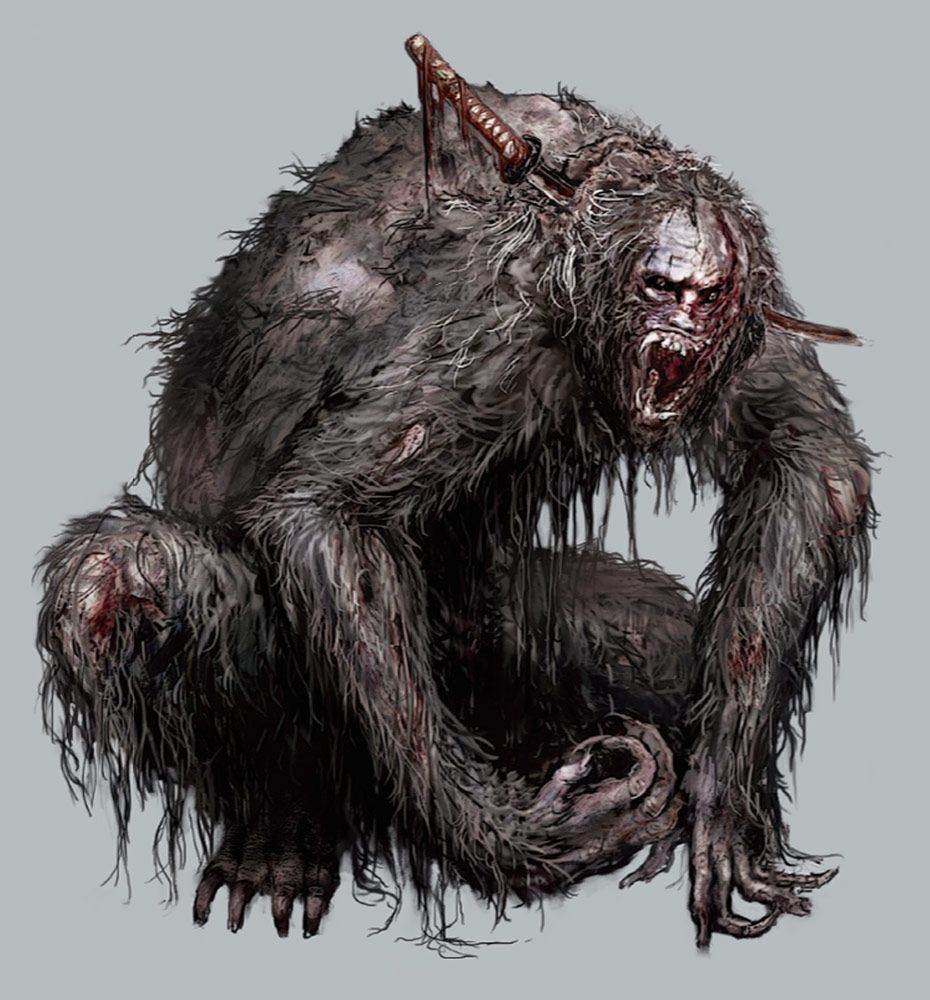- PART 2 - #gamedesign #combatdesign Game freeze can also be used as NEGATIVE reinforcement. In Hollow Knight, the game freezes every time the player takes damage. In Bayonetta, the game freezes when she takes damage but only when the she’s past a certain health threshold. 4/6
The CONTEXT of how freeze is used makes sense for the rules of these respective games. Bayonetta is harder to hit and has more health so taking damage isn’t frequent; conversely, Knight’s health is an important resource that needs to be managed against casting spells. 5/6
In Street Fighter V, game freeze is used to inform the players that special attacks have been initiated. Aside from providing an exciting/visceral action, the freeze gives the players time to plan their next action given the highly technical nature of the game. 6/6
GAME SLOWDOWN - Similar to game freeze, slowdown (time dilation) alters the global speed of the game but animations are allowed to progress slowly. Slowdown can be used effectively to PREPARE the player for an incoming state change and provide positive reinforcement. 1/10
In Bayonetta, slowdown occurs after a timed dodge (Witch Time). The slowdown lasts ~0.25s giving the player time to process the mode shift. Similarly, God of War applies slowdown on every parry. The slowdown, in this case, adds to the WEIGHT to the shield hitting the enemy. 2/10
HIT PAUSE - This technique reduces the attacker and victim’s animation speed for a specified amount of time on IMPACT. Unlike slowdown/freeze, the world around them isn’t affected. Hit pause allows the player’s eye to “catch” a frame on impact. 1/4
In Street Fighter V, the amount of hit pause varies consistently between the strength of each attack. Light/Medium/Hard attacks pause for 8, 12 and 15 frames, respectively. These consistent tiers give players important feedback of how to time their next attack. 2/4
In Devil May Cry 5, hit pause occurs only on heavy attacks. The feel of SLICING through flesh is preserved. Hit pause on heavy attacks like this launcher also serves as a TELL to inform the player that the attack was successful. 3/4
Unlike Devil May Cry 5 where hit pause is reserved for heavy attacks, hit pause is utilized on every Kratos single attack to emphasize a feeling of WEIGHT. 4/4
CAMERA - Camera behavior is another important tool to enhance game/hit feel. Cameras can be Panned/Tilted (to name a few) to FRAME the action to see the impact/attack motion. SFV utilizes this technique during special attacks to turn 2D gameplay into 3D game feel. 1/10
In the video, notice how additional camera behaviors are added to more powerful attacks. Since the EX/Special attacks happen more often than Super attacks, camera behaviors feel less special compared to the super move which integrates camera cuts and extreme zooms. 2/10
Camera zoom can FRAME an action or enhance an impact. In the video, the camera zooms when the kill starts and then zooms again right when the sword makes contact for the killing blow. 3/10
In Tekken 7, EXTREME zoom is used to make certain attacks feel POWERFUL. By zooming into the impact area so closely and over a few frames, the player is STARTLED into feeling the connection. 4/10
Camera shake is a common technique to enhance an impact and make the player feel a JOLT. The amount of shake typically varies based on the attack strength and the duration of the shake needs typically lasts the length of the animation. 5/10
HUD - Heads up display elements contribute to game/hit feel in versatile ways. The HUD can be used to COMMUNICATE various player states, actions or properties. The non-diegetic nature of the HUD allows for creative, out-the-box behaviors while retaining thematic properties. 1/10
In Tekken 7, the health bar SHAKES/GLOWS when the player takes damage. This behavior lasts ~the length of the reaction. On low health, a red outline is added to further reinforce the player’s state. It also layers on more particles around the bar when harder attacks hit. 2/9
CHUNKING the health bar when taking damage is a common technique to sell the power of the incoming attack. To ensure the player notices this, the damaged amount remains visible for ~1s. Big chunks of red make the player feel PAIN. 3/9
Devil May Cry Stylish Rank Gauge is a great example of how HUD elements are designed around a gameplay system to provide the positive reinforcement/support moment-to-moment combat rules. 4/9 

As the player performs better, the Gauge LAYERS on additional visuals for positive reinforcement. The letter serves as a FILL METER to indicate when the next grade will occur. Particles are added to increase intensity and the letter S animates loudly/color is BRIGHT yellow. 5/9
Since the player’s eyes are usually on the player and enemy, the transition from each letter always starts with an exaggerated FLOURISH where the letter scales from BIG to normal size to catch the attention in the player’s periphery vision. 6/9
Additional layers of particles are added to provide positive feedback and the letter S itself animates more loudly while the color S is BRIGHT yellow. 7/9
CONTROLLER RUMBLE - Vincent Napoli (Kratos combat designer on God of War 2018) wrote an exceptional blog post on controller rumbles and the nuance/design intent behind them. Tons of great insight! combatrecall.blogspot.com/2018/05/contro…
FINAL THOUGHTS - This thread barely scratches the surface in studying techniques designers can utilize to SELL game/hit feel. These same techniques can be tweaked and modified for VASTLY different results to support all types of combat systems and player abilities.
• • •
Missing some Tweet in this thread? You can try to
force a refresh





